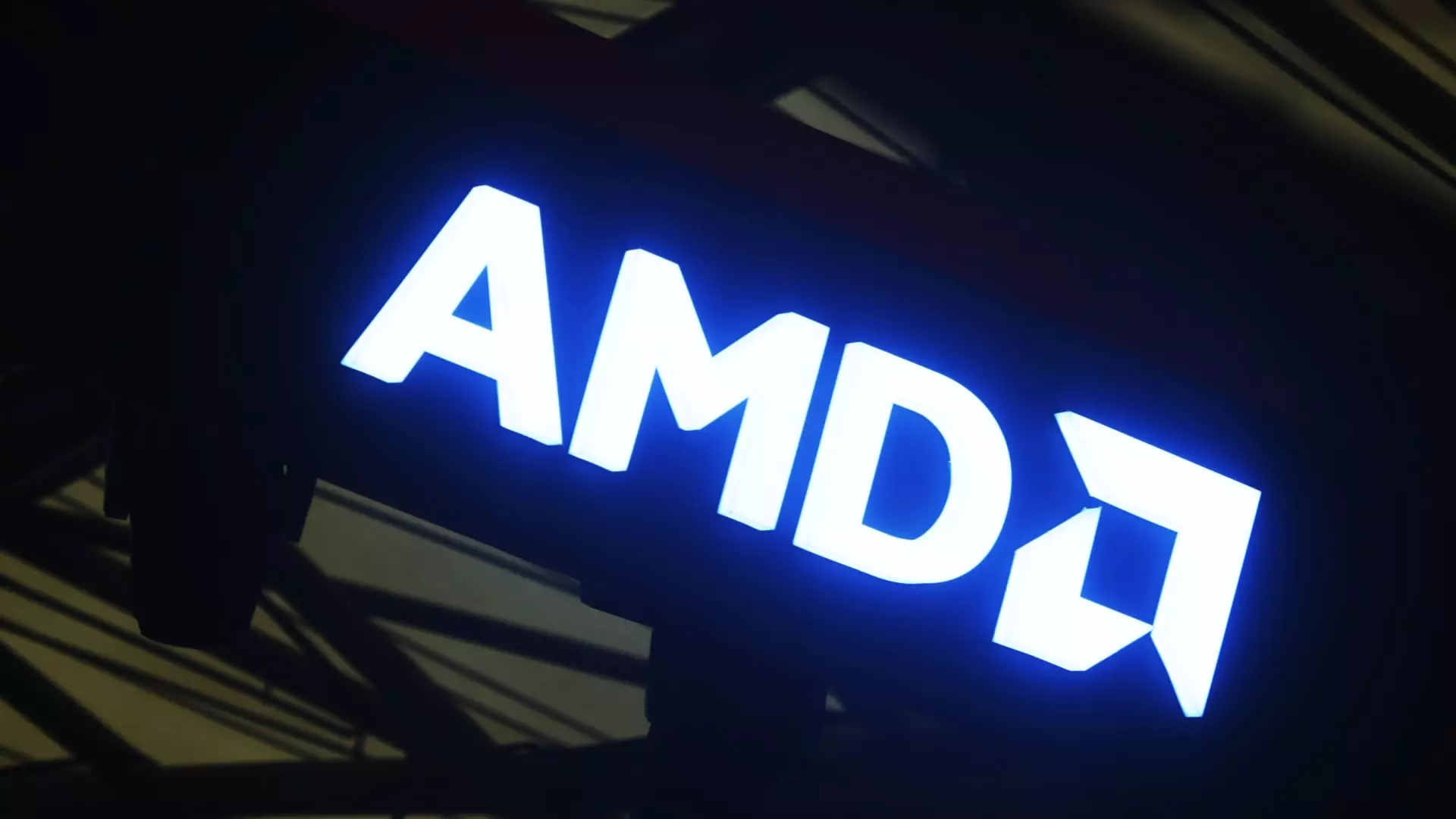Advanced Micro Devices (AMD) is currently navigating one of the most tumultuous periods in its history, with various industry analysts warning of a potentially dire situation. The latest insights from KeyBanc’s analyst John Vinh indicate that AMD may face significant risks that could hinder its ability to compete effectively against heavyweight rivals like Nvidia and Intel. The nuanced intricacies of the semiconductor market mean that even established players like AMD can find themselves in precarious positions, particularly when external pressures, such as tariffs and price wars, intensify.
The company’s burgeoning reputation has taken a hit, as evidenced by its stock, which saw a staggering drop of over 30.5% this year amidst a broader market sell-off. These figures prompt serious questioning about AMD’s future, raising concerns on whether they can not just survive but thrive as other competitors gain momentum. Vinh’s downgrade of AMD to sector weight from overweight leaves investors pondering if this is merely a short-term hiccup or a signal of more profound vulnerabilities.
Tariff Threats and International Trade Dynamics
One of the most pressing issues AMD faces is the mounting tariff risks associated with its supply chain, particularly regarding the Chinese market. The increasing concerns surrounding export restrictions could have far-reaching consequences for AMD’s revenue stream. Hyperscalers in China, who play a critical role in the demand for semiconductor products, could significantly limit their purchases due to regulatory constraints. The harsh reality is that China represents a lucrative yet unstable market for AMD.
Vinh’s assertion that “China AI demand may not be sustainable” reveals a critical gap in AMD’s future growth prospects. Moreover, with the prevailing geopolitical climate, companies like Intel and Nvidia appear better positioned to navigate these murky waters, given their established presence in the market. In an industry where agility is synonymous with success, AMD’s potential drawbacks may prove catastrophic if they fail to adapt quickly to these changing dynamics.
The Rise of Aggressive Competition
In this highly competitive space, pressure is relentless. The strategic price cuts from Intel, for example, could lead AMD into a detrimental price war that may erode its already dwindling profit margins. If Intel’s Lunar Lake mobile processors offer features and performance that AMD cannot match, the firm may have no choice but to engage in aggressive pricing strategies to avoid losing market share.
John Vinh’s estimation that AMD might be forced to slash its prices by a jaw-dropping 20-40% only amplifies this concern. This highlights a disturbing trend where innovation becomes secondary to survival, a phenomenon that could destabilize not just AMD, but the entire semiconductor market. With powerful players like Nvidia at the forefront of technological advancements, AMD risks being left in the dust unless they can pivot effectively to stem the pressure of price competition.
Challenges in the AI Sector
AMD’s challenges are compounded by the evolving landscape of artificial intelligence (AI) technologies. The analyst believes that the anticipated demand growth for AI-oriented GPUs in China is less promising than initially thought. The sluggish growth outside of China, especially in AI applications, exposes a critical vulnerability for AMD. With the company’s future growth strategy heavily reliant on AI, this stumbling block could severely hinder their ability to innovate and expand in this vital sector.
While companies like Nvidia surge ahead with advanced offerings in AI, AMD appears to be trapped in a cycle of imminent crisis. The analyst’s projections estimate that AMD’s new MI308 GPU will only see moderate volume growth, which may be insufficient to create any real momentum for the firm in an increasingly competitive domain.
Investor Sentiment and the Path Forward
Despite the daunting challenges ahead, a significant portion of market analysts continues to maintain a bullish outlook on AMD, with 32 of 50 covering the stock rating it as a buy or strong buy. The average price target suggests a potential upside of over 70%, but such optimism seems disconnected from current realities. The perception that the stock is relatively inexpensive at 13x the EPS estimate for 2026 begins to fade when weighed against the growing risks to gross margins caused by the aggressive tactics of competitors like Intel.
In this swirling maelstrom, AMD must act decisively to salvage its tarnished reputation and regain investor confidence. The stakes are higher than ever, with the firm standing at a crossroads that may dictate its trajectory for years to come. Without immediate and astute responses to the competitive pressures and market dynamics, AMD may find itself not just struggling, but potentially in a crisis that could redefine its place in the semiconductor industry.

